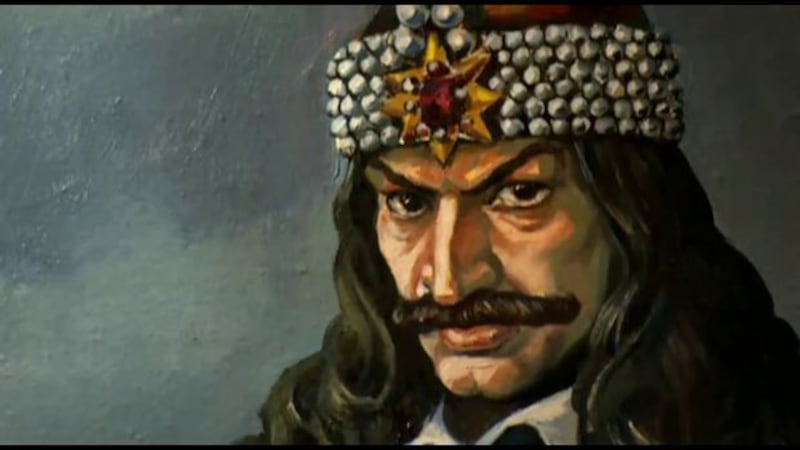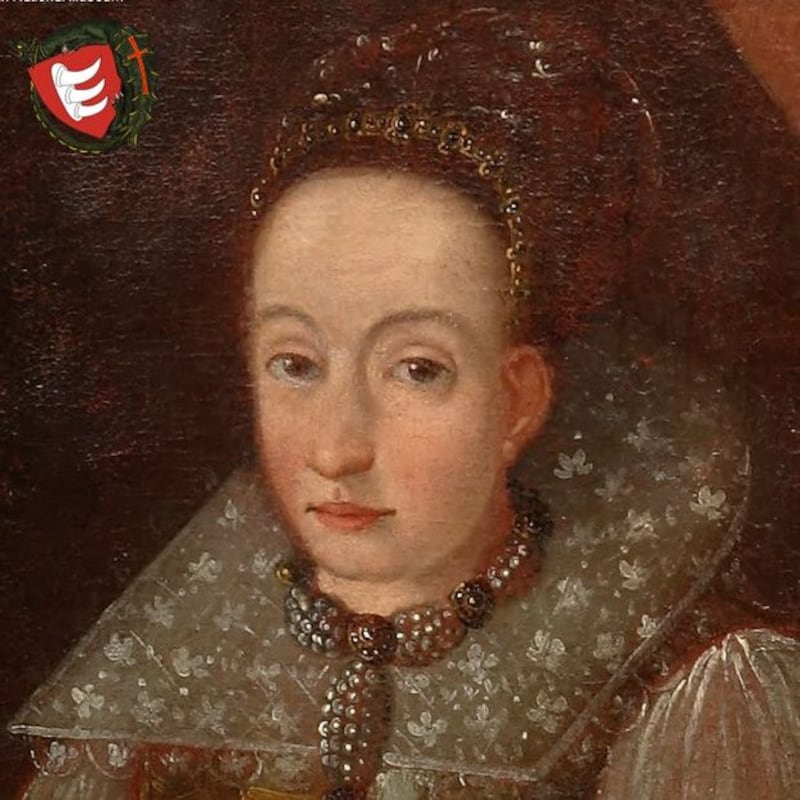Vampires aren’t evil, they’re just misunderstood – or so US vampirologist Bruce McClelland would have us believe.
McClelland has been fascinated with monsters since seeing Frankenstein at seven years' old and has since studied Russian language and Slavic folklore. He teaches a university class titled "Blood and sacrifice" and he's not averse to writing academic essays on television shows such as Buffy the Vampire Slayer and True Blood, fascinated as he is by the vampire's continued hold over our imaginations.
The vampire itself, he says, is the product of the very human desire for a scapegoat.
“In a small village in Bulgaria, there are certain things that would create a vampire: suicide, or being born on a Saturday, or having a cat jump across your body if you’re lying in state.
And if you kill a corpse you're not hurting anybody
“You need a vampire to explain certain things. Here’s a widow and she’s gotten pregnant. How can she be pregnant, her husband is dead? Her husband must be a vampire. We have to go hunt him down, sprinkle stuff around his grave. We’re going to take a visible social action to demonstrate our control over this situation because otherwise the social order starts to break down. And if you kill a corpse you’re not hurting anybody.”
It differs from witch trials in that witches were punished while they were alive, and “women were chosen because they had very little social value”. In the vampire world, dead men are chosen because the men of the village were needed to do the work, “but you need a way to restore peace after a disruption. If you go and blame your neighbour for your dead sheep, you’re starting a feud.” So instead, you blame the vampire. “Its function is to disperse blame.”
If the village had no one who had died recently with the right characteristics, they would call in the slayer. “You gave him a little money, he tells you who the vampire is, and you dig up the body and cut off its head or drive a stake through it. The social problem is solved.” And, say what you will about Buffy’s high-kicking heroism, McClelland believes that slayers are unsettling figures in their own right.
“The vampire slayer is closely connected to the vampire in the same way that in serial killer detective shows, the detective always has something in common with the killer: he’s just wacky enough to understand him. [They are] two sides of the same being where the vampire is the dark, erotic, violent urge and the slayer is the super ego and the part of the self that keeps that in check.”
These people have a different idea about the nature of the body and what happens to it after death
The spread of the legend of the vampire seems to be rooted in our failure as a people to understand our neighbours or, more specifically, the failure of people in western Europe to understand the folklore and traditions of the Balkans.
When people talk about historical outbreaks of vampirism, they are talking about periods in history where “as the Turks are receding from the Balkans and at the border zones, the west is encountering these new religious and ritual beliefs. The vampires are part of that. These people have a different idea about the nature of the body and what happens to it after death from the Christians.”
These orthodox indigenous people often rejected Christianity and its crucifix symbolism. “There was already a belief in reincarnation in that part of the world. They have no reason to accept Christianity. What’s in it for them?”
The word vampire can be traced back to the early 18th-century from the Serbo-Croatian vampir, which originally designates not anything supernatural, but someone who does not accept Christianisation or who has been excommunicated. "Excommunicated people were buried out of town so the word begins to refer to people who are excommunicated and are dead. And that's when the folklore kicks in."
With the Enlightenment, the west sent in scientists and journalists to debunk the vampire hysteria. "They dig up the bodies, they hear what the people have to say about why they think there's a vampire. Van Helsing is based upon a Dutch physician who was the physician to empress Maria Theresa of Austro-Hungary [who was the last of the House of Habsburg]. He gets called to go describe this stuff. She doesn't want people to start thinking of the country as backward and folkloric."
A lot of what was happening could be explained by people being accidentally buried alive. “This is why we throw dirt into a grave at a funeral. Everybody has to grab a handful. If everyone throws the dirt, no one is responsible.” The long fingernails typically associated with vampires are owed simply to the shrinking of decomposing flesh. “As long as you’re looking for a vampire, you’re going to see what you’re going to see.”
It was only when vampire legends entered western culture, and became a subject of literature, that they came to embody evil: ideas around blood-drinking, and contamination by biting were introduced, and were taken from western ideas of witchcraft.
Since then, the vampire has evolved in western culture, from Nosferatu to the sparkly celibate teenagers of Twilight. And as religion loses its power, the vampire's evil is dissipating: here come the sexy young men.
McClelland attributes this to Anne Rice, who made the vampire a hero. "There's still that idea of sex and violence tied together, but it's romanticised now. Now the vampire is heroic, he's a countercultural hero, because the strength of this Christian symbolism, against the devil, the crucifix, has faded."
The resurgence of the vampire is always an indicator of some kind of social change
The myth of the vampire sits well within teen narratives because of the "ambiguity of the impulses of sex and violence. And also the romanticising of sexual power." Also, adolescents find common ground with notions of feeling like an outsider. "In Buffy, its mostly clean-cut high-school kids from California and then the demons are the outsiders, the people no one wants to deal with. So it's actually an attack on conformism that was growing . . . The resurgence of the vampire is always an indicator of some kind of social change."
Intriguingly, McClelland feels that at this moment in our culture, the vampire has been usurped by the zombie, which “represents the great unwashed, the 99 per cent as we call them over here, the people who don’t have a voice. The vampire always has a name and a personality, perhaps even a class marker. Dracula is a count. Zombies are nameless, powerless, just a bunch of desire. They are consumers. So we’ve moved into that world now.”
McClelland can rationalise all the myths but there have been moments when he has wavered. In the Bulgarian Ethnographic Museum, he saw an old prayer against vampires from the 17th century, hand-printed in red ink. "I felt I was in Raiders of the Lost Ark. I felt I'm really seeing a magical object. It really had that power over me." He has a photograph of it on his wall as a "sort of talisman against vampires".
Then he tells me about his own first-hand vampire experience, after a dinner in Bulgaria with old scholars of ancient Slavic societies. One of the men, “was staring at me all night with this very interesting stare . . . there was a slyness to it, and a darkness”.
The next morning, McClellan woke up not sick, but feeling like he was paralysed. “It lasted the entire morning and I’ve never felt this way. I couldn’t move my limbs. So in my idea, it was a psychic vampire attack.”
We can't explain things, like why Trump got elected, because it's too complicated
He doesn’t want to undermine his academic work with this sort of talk but, “one of the problems we’re having now is we’ve loaded everything into science and science can only describe, it really doesn’t understand.
“We can see images of the human brain, that’s astounding stuff, but that’s technology. We can’t explain things, like why Trump got elected, because it’s too complicated. The forces that coalesced to produce that effect are not really things anyone understands.”
- Bruce McClelland, David Skal and Maura McHugh will take part in a discussion on Slayers and Their Vampires at 1pm today in the Albert Lecture Theatre, Royal College of Surgeons in Ireland, 123 St Stephen's Green, Dublin 2.€10. See bramstokerfestival.com
Be more afraid of the living: real-life vampires

Vlad of Walachia or Vlad the Impaler was a 15th-century Romanian prince during the Ottoman expansion in Europe. Vlad had been offered up by his father as a political prisoner as a boy, and this betrayal went on to have serious psychological implications. In 1462, after defeating an Ottoman army three times the size of his own using guerrilla tactics, Vlad ordered 20,000 Ottoman soldiers to be impaled on stakes outside the city of Torgviste, hoping this "forest of the dead" might dissuade other attackers. Whether Vlad was actually a blood drinker is disputed, although literature suggests that he liked to dine surrounded by his impaled victims, dipping his bread in their blood.

Elizabeth Bathory was a Hungarian countess and serial killer famous for her vampire-like tendencies. She killed hundreds of young women in the late 1500s, working her way through daughters of peasant workers and moving on to lesser gentry. She was said to bite the flesh of her victims and bathe in the blood of young virgins in an effort to retain her youth, even celebrating her own daughter's wedding with a blood-filled orgy.
Richard Chase was an American serial killer known as the Vampire of Sacramento. He killed six people in January 1978, partaking in necrophilia, cannibalism and blood-drinking. He once told detectives that, like a vampire, he considered unlocked doors an invitation to come inside. Despite significant evidence of mental illness, his plea of not guilty by reason of insanity was denied and he was sentenced to death by gas chamber. He killed himself before he could be executed.
In 2011, a medieval "vampire" skull was discovered in Venice among the skeletons of 16th-century plague victims. Archaeologists on site believed the skull belonged to a woman considered to be a vampire because a rock was shoved in her mouth. This practice was employed to prevent a vampire from feeding on nearby bodies of other plague victims.










